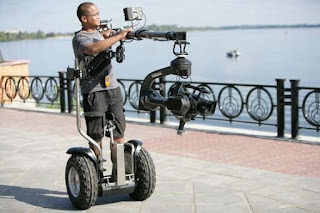Today I'm going to post the different Editing techniques.
Editing can be used to construct representations by:
- The pace of editing (fast paced-young,energetic,slow-old)
- Contrasting characters or settings (crosscutting,shot/reverse shot)
- Showing us what a character is looking at
- Showing us what a character is thinking about (cutting,superimpositions)
Cutting the process where one shot is replaced on screen immediately. So it is a visual transition created in editing in which one shot is instantaneously replaced on screen by another.
Eyeline match The matching of eyelines between two or more characters. For example, if Sam looks to the right in shot A, Jean will look to the left in shot B. This establishes a relationship of proximity and continuity.
Shot reverse shot cutting usually used for conversation scenes, this technique alternates between over-the-shoulder shots showing each character speaking. In a stape if editing in dialogue sequences.
Film historian David Bordwell defines the film technique "where in one character is shown looking (often off-screen) at another character,and ten the other character is shown looking 'back' at the first character. Since the characters are shown facing in opposite directions, the viewer unconsciously assumes that they are looking at each other" (Bordwell).
Fade out/in. A visual transition between shots or scenes that appears on screen as a brief interval with no picture. The editor fades one shot to black and then fades in the next. Often used to indicate a change in time and place.The image can fades out out to a black screen, or fades in from a black screen.
Dissolve
One shot fades out as the next shot fades in. In other words, a gradual scene transition. The editor overlaps the end of one shot with the beginning of the next one.
Crosscutting. Cutting back and forth quickly between two or more lines of action, indicating they are happening simultaneously. Literally, cutting between different sets of action that can be occurring simultaneously or at different times. Cross-cutting is used to build suspense, or to show the relationship between the different sets of action.
Action Match. Match on action is a technique of filming used in many sorts of films. It consists of connecting 2 shots together in which a character finishes off an action in the second shot that was started in the first one, for example a clip of a character walking through a door in which he opens the door being filmed from behind then the clip cuts to him walking through from the other one.
Graphic match. A similar shape or colour linking two consecutive shots.
A match cut is one method that directs use in editing to suggest a relationship between two different objectives
and to create a visual metaphor. It is a cut within a scene that makes sense spatially. This can be between two different objects, two different spaces, or two different compositions in which an object in two shots graphically match.
Slow motion. Relating to, or being motion-picture or video photography in which the action that has been photographed is madre to appear to occur slower than it actually occurred.
Fast paced/slow paced editing. When the editing is far paced the action will cut rapidly from shot to shot with each shot lasting only a few seconds. Slow paced editing will involve limited cutting from shot to shot.
Superimposition. One image is placed on top of another image.




























